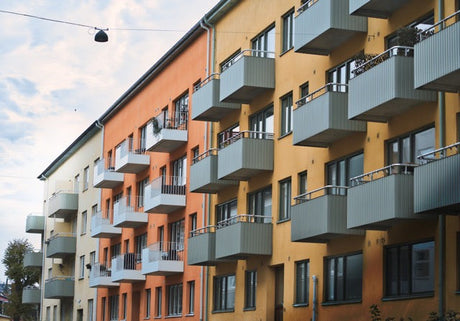Key Points:
From 27 October 2025, Awaab’s Law will require landlords to act within strict deadlines when tenants report damp, mould, or other hazards. Key rules include:
- 10 working days → investigate and inspect the problem
- 3 working days after investigation → provide written findings to the tenant
- 5 working days after investigation→ make safe if a serious hazard
- 12 weeks maximum → complete all repairs
- 24 hours → fix emergency hazards
- Alternative accommodation → required if repairs cannot be completed safely on time
Failure to comply can result in court action, unlimited fines, compensation claims, and public sanctions.
What Is Awaab’s Law?
Awaab’s Law, part of the Social Housing (Regulation) Act 2023, introduces fixed legal deadlines for landlords to investigate and fix housing hazards — starting with damp and mould.
The law was named after Awaab Ishak, a two-year-old who tragically died in 2020 after prolonged exposure to black mould in his family’s social housing. As Deputy Prime Minister Angela Rayner said, the law exists to ensure “tragedies like the death of Awaab Ishak never happen again.”
Initially, Awaab’s Law applies to social housing landlords (councils and housing associations) in England. The government has confirmed plans to extend it to the private rented sector, meaning all landlords should prepare now.
Why Awaab’s Law Matters
Awaab’s Law is more than just another regulation – it’s a lifesaving measure.
Health risks
Damp and mould pose serious health risks, especially to children, the elderly, and those with respiratory conditions. Mould releases spores that can trigger asthma attacks, allergies, skin rashes, and in severe cases, cause life-threatening illnesses.
Property Risks
Beyond the human cost, mould causes structural damage to properties over time and becomes more expensive to fix the longer it’s left untreated. Awaab’s Law forces landlords to act fast, preventing minor issues from festering into major hazards.
Tenant Rights
Tenants will get enforceable rights to timely repairs and can hold landlords accountable.
Key Dates and Deadlines Under Awaab’s Law
Mark your calendars. Awaab’s Law comes into force on 27 October 2025 for social landlords, and it will roll out in phases. Here are the critical dates and what happens at each stage:
- October 2025 – Phase 1: From 27 October 2025, all social housing landlords must investigate and fix damp or mould issues within strict timeframes. Damp and mould that pose a serious health risk become top priority hazards. Landlords will be legally required to inspect reported damp/mould problems and carry out necessary repairs within a set period (details on those timeframes below). Emergency hazards (anything immediately dangerous, like severe structural issues or safety risks) must be addressed within 24 hours in this phase.
- 2026 – Phase 2: The exact start date in 2026 is to be confirmed, but this second phase will include issues like heating failures, electrical faults, fire safety risks, sanitation/hygiene problems (e.g. faulty toilets or drainage), and more. Landlords will need to respond just as rapidly to these problems as they do for mould.
- 2027 – Phase 3: By 2027, the law will cover almost all housing safety hazards. This final phase extends the strict timelines to all high-risk issues defined under the Housing Health and Safety Rating System (HHSRS). There are 29 hazard categories in the HHSRS (ranging from damp, excess cold/heat, pests, to structural collapse). Awaab’s Law will ultimately ensure that if any of these hazards pose a serious risk in a social housing property, the landlord must investigate and remedy them within the legally mandated time limits. In fact, even less severe “Category 2” hazards will trigger action if they could harm an at-risk tenant.
Repair Deadlines Under Awaab’s Law
- Inspection within 10 working days: When a tenant reports damp or mould, you have at most 10 working days to investigate the problem. That means promptly visiting the property, assessing the mould/damp issue, and determining its extent and cause.
- Report findings in 3 days: Within 3 working days after your investigation is done, you must provide the tenant with a written report. This report should clearly explain what you found, what you plan to do about it, a timeline of the repairs, and who the tenant can contact with questions.
- Make it safe in 5 working days (if serious): If the reported damp or mould is judged to be a serious hazard, then you have five working days from the investigation to make the property safe. In practice, this might involve a temporary fix initially to immediately remove the danger, followed by more extensive repairs afterwards. The key is that within one work week, the tenant’s health must no longer be in jeopardy from that issue.
- Complete repairs (full fix) in a reasonable time – no more than 12 weeks: After the urgent steps, you must carry out all necessary repairs to permanently resolve the damp/mould problem in a timely manner. The law specifies that any follow-up work to prevent the issue from returning should be done within 12 weeks. All repairs must be finished within a “reasonable time”, which effectively means as soon as feasibly possible, given the nature of the work.
- Emergency hazards in 24 hours: Separately, any immediate dangers must be addressed “as soon as possible and at most within 24 hours”. Think of things like a structural collapse risk, an electrical fire hazard, or extreme toxic mould that makes a home uninhabitable.
- Alternative accommodation if needed: If you cannot make the property safe within the above timeframes – say a part needed for repair is back-ordered, or the issue is so severe it will take longer – you must arrange and pay for alternative accommodation for the tenants. In other words, you’re obligated to rehouse the tenant temporarily (at your cost).
What Landlords Should Do Now to Prepare
Landlords should begin preparations immediately to ensure full compliance from day one. Here’s what you should be doing now to get ahead of Awaab’s Law:
- Assess and upgrade your repair process: Take a look at how you currently handle maintenance and tenant complaints. How long do you typically take to respond to a damp complaint? If it’s more than a few days, that won’t cut it anymore.
- Proactively inspect your properties: Don’t wait for tenants to report mould – go find it. Do a thorough inspection of all your units for any signs of damp, leaks, or condensation problems now. Fixing issues preventively will save you time and trouble later.
- Train your team on the new protocol: Make sure everyone involved in property management – maintenance managers, housing officers, letting agents, call center staff – understands the requirements of Awaab’s Law.
- Improve record-keeping and communication: Awaab’s Law requires clear documentation and communication with tenants. If you don’t already have a system to log complaints, track repairs, and keep correspondence, now is the time to implement one.
- Line up reliable contractors for emergencies: A major challenge can be finding tradespeople on short notice, especially after hours. Start building a network now.
- Establish contracts or on-call agreements with maintenance contractors who can respond within 24 hours for emergency situations.
- Budget for faster responses: Rapid fixes and emergency call-outs can cost more – that’s just a reality. As a landlord or housing provider, plan financially for this new normal. Set aside a contingency fund specifically for Awaab’s Law compliance costs.
- Upgrade ventilation and damp-proofing: Many damp and mould problems can be prevented by proper ventilation and moisture control in properties. Now is an ideal time to audit your properties’ ventilation.
Consequences of Not Following Awaab’s Law
Court action & damages
Under Awaab’s Law, the repair timelines are written into the tenancy terms, so a breach is a breach of contract. We also expect an uptick in housing disrepair claims, where tenants sue for compensation for suffering in poor conditions. Landlords could face hefty payouts if tenants prove that negligence over damp or mould harmed their health or comfort.
Housing Ombudsman rulings
Tenants are also empowered to use the Housing Ombudsman Service and other channels. The Ombudsman can order you to carry out repairs, apologise to tenants, and even pay financial compensation for distress or inconvenience. They can also publish findings that name and shame landlords who flout their duties. In an age of social media and instant news, a public case of a landlord failing to fix mould (especially after Awaab’s Law is in force) could severely damage your reputation.
Unlimited fines
For social housing landlords, the stakes go even higher. The Regulator of Social Housing – a government watchdog – has been given new powers to enforce standards strictly. Starting in 2024, the regulator can conduct surprise inspections and, notably, issue unlimited fines to social landlords that don’t meet required standards.
Rehousing costs
If you disregard mould problems, your tenants may refuse to pay rent (legal under some circumstances of disrepair) or move out, leading to void periods. You’ll incur higher costs later when the mould has spread and requires a more expensive remediation or refurbishment. Your property’s value can decline if damp destroys plaster, timber, or flooring.
Ventilation Solutions to Combat Mould and Damp
While Awaab’s Law forces landlords to act quickly on damp and mould, prevention is far better. One of the most effective strategies is improving ventilation — and modern single-room heat recovery units (SRHRUs) make this simple.
Compact and wall-mounted, units like the Elta FLUX HR series continuously remove humid air while bringing in fresh, filtered air, recovering heat to cut energy bills. They run quietly, cost little to operate, and are easy to retrofit in problem rooms. By keeping air circulating and moisture under control, they stop condensation and mould before it takes hold.
Advanced models such as the FLUX HR Plus+ add smart humidity sensors and remote control, automatically boosting ventilation when needed. Low-maintenance and “set-and-forget,” these systems protect tenants’ health, reduce call-outs, and help landlords stay compliant.
** Disclaimer: There are situations where consulting building control is necessary, particularly if a modification could compromise other building systems or affect the building’s compartmentation. We strongly advise that you consult professional advisors, as they will take a holistic view of the project and can determine whether contacting building control is required.



